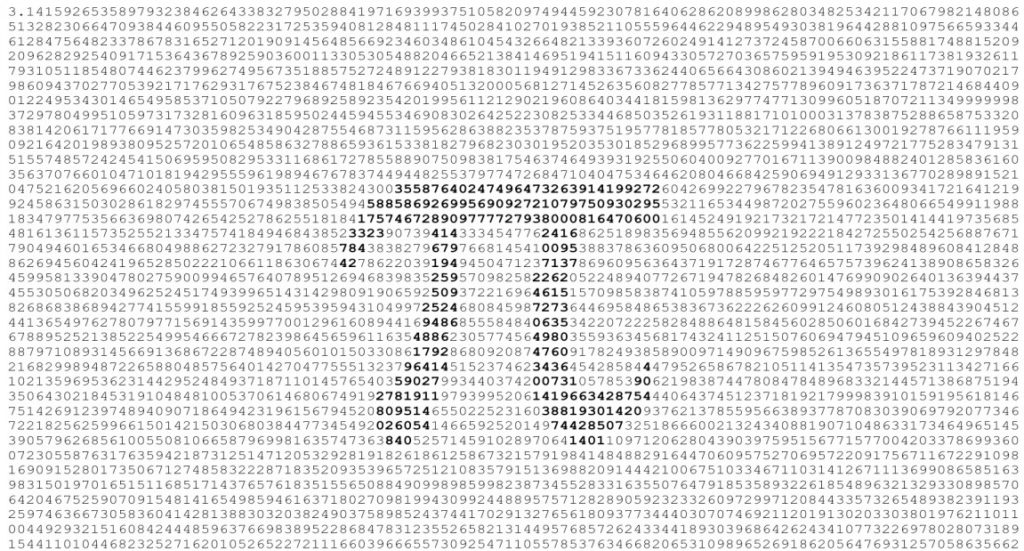The number π is a mathematical constant, represented by the 16th letter of the Greek alphabet "π" since the mid-18th century, and is spelled out as "Pi". It is also referred to as Archimedes' constant.
Pi is the number you get when you divide the circumference of a circle by its diameter.
Pi is an important number used in many different areas of mathematics and geometry. Pi is used in most calculations for building and construction, quantum physics, communications, music theory, medical procedures, air travel, and space flight, to name a few.
Pi is an irrational number, which means that it cannot be expressed by a simple fraction. and that the digits after the decimal go on forever without any regularly repeating segments. As of March 2019, humans have calculated Pi to over 31,400, 000, 000, 000 digits – that’s 31.4 trillion places.
The first few digits of Pi are 3.14, which correspond to March 14th (3/14), so we celebrate the number Pi on this day. If you were to celebrate Pi day with actual pie, you can serve it on March 14 at 3:09pm + 26 seconds. Get it? 03/14 15:09:26
This activity translates the numbers that make up Pi into a colour code. By turning this into a visual it might be easier to understand that there is no pattern to Pi!
